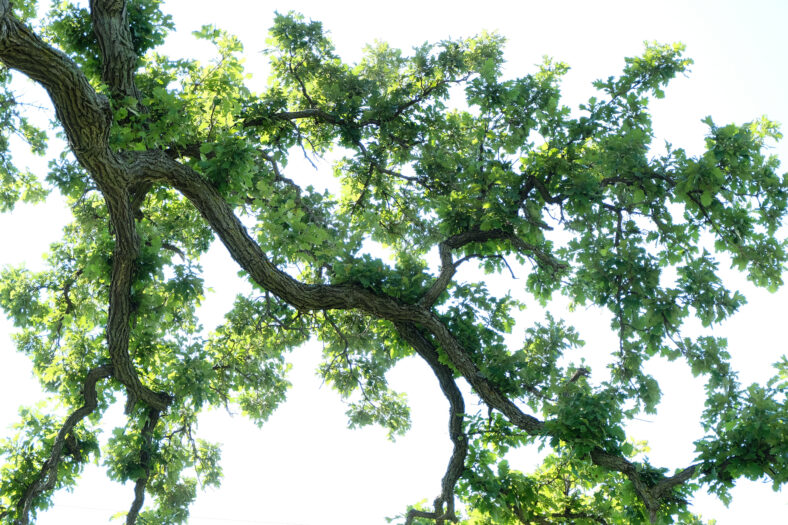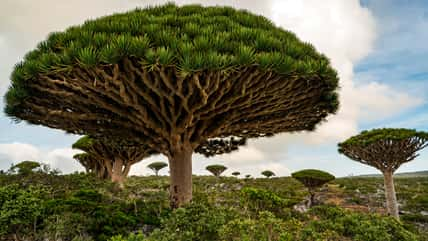Scientists Have Decoded The DNA Of White Oak Trees

The white oak, scientifically known as Quercus alba, is one of the most abundant trees across much of eastern North America. It typically reaches 50 to 100 feet in height. Some specimens have lived for more than 600 years.
Although it’s called the white oak, the bark on its trunk is ashen gray in color. The leaves have a glossy green surface and turn shades of orange or deep red in the fall. Bright yellow blossoms start to appear around the month of May, while acorns begin to fall in early October.
These small, shiny, light brown acorns are a major food source for many birds, squirrels, and deer. The white oak is valuable to wildlife because it not only provides sustenance but shelter and nesting material as well. Both living and dead oak trees supply dozens of species of birds with sites to build their nests.
In addition, the tree species maintain a diverse network of insects. For instance, it is the only source of food for two species of caterpillars.
As you can see, the white oak adds so much to forest ecosystems. Planting more of these trees could go a long way toward supporting the future of the nation’s biodiversity.
Here in the United States, white oak is the most important timber tree. Its tough, durable wood is used to construct sturdy beams, furniture, barrels, railroad ties, and more. The wood is highly resistant to rot and water damage.
But for all its significance, this essential forest species is declining in seedlings in many parts of its range. A team of researchers from the University of Tennessee (UT) at Knoxville collaborated with multiple academic institutions across the nation and the U.S. Forest Service to gather genetic sequence data of the species.
“The white oak genome represents a major new resource for studying genome diversity and evolution in Quercus. Also, unbiased gene annotation is key to accurately assessing R [disease resistance] gene evolution in Quercus,” said Meg Staton, a lead author of the study and an associate professor of bioinformatics and computational genomics at UT.
The study discusses how genetic diversity and disease-resistance genes seem to have evolved during the history of Quercus.

Sign up for Chip Chick’s newsletter and get stories like this delivered to your inbox.
The amount of genetic variation and the extent to which populations have adapted to their local areas will determine how Q. alba and other white oak species will respond to rising temperatures and more frequent droughts.
Overall, the study provides insights into plant evolution, tree breeding, and genetic improvement efforts that could help forest managers better preserve forest resources.
If we don’t act fast, the future might hold fewer towering oaks, and many creatures will be left without proper homes, wreaking havoc on the ecosystem’s balance.
The details of the full study were published in the journal New Phytologist.
More About:News





